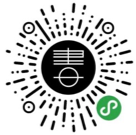
出版时间:2016-05-01
定 价:368.00
作 者:(美)帕持里克·泰伊 编 齐梦涵 译
责 编:肖莉 齐梦涵
图书分类: 建筑外观设计
读者对象: 建筑设计单位,建筑师及建筑设计兴趣爱好者
上架建议: 建筑设计
开本: 8
字数: 45 (千字)
页数: 336

本书展示了帕特里克•泰伊事务所新颖的获奖作品,该公司总部设在洛杉矶。他们的业务范围广泛,从家具设计到亚洲高层建筑设计,不受规模和建筑类型的约束。本书着重介绍该公司的建筑理念,他们的设计源于识别、提取、两分这一过程。与紧张感成就更加有活力的建筑的理念相一致,公司拒绝寻找解决冲突的方法,而是选择接受差异。他们利用、操纵这些差异,将之融合进他们的设计中,以此创造更有影响力的作品。
帕特里克•泰伊创建了帕特里克•泰伊建筑事务所,住在洛杉矶,是一位异常有天分的建筑师。他在加利福尼亚大学获得了建筑与城市设计的硕士学位。在自己创办公司之前,他曾在著名的设计公司弗兰克•盖里建筑事务所和墨菲西斯建筑事务所获得了宝贵的工作经验。目前,他是南加利福尼亚大学的一位教授,获得了诸多奖项,并且他的作品也出版在多个出版物中。
目录
006 建筑两分法——序言 帕特里克•泰伊
018 在途中 汤姆•梅恩
020 谜:使熟悉的事物陌生化 史蒂芬•菲利普斯
026 柯林斯美术馆
040 雅各布斯地下美术馆
046 阿什克罗夫特作家工作室
052 利夫奥克工作室
062 雷东多海滩住宅
070 海滨大道住宅
078 虎尾住宅
090 黑箱住宅
096 特拉罕牧场住宅
104 米尔伍德住宅
114 海洋公园临时雕塑
118 玛尔•维斯塔住宅
126 日落聚会户外公共空间
130 阁楼展览馆
140 诺达尔住宅
144 伦敦动画公司办公空间
154 爱尔兰西科克艺术中心
162 塞拉•博妮塔多功能经济适用房
174 约书亚树国家公园沙漠度假地
180 索契奥林匹克展览馆
186 格兰德大道大厦
194 台中美术馆图书馆
202 忘却美术馆
218 重庆康德中心
226 北京金海拉克莲花别墅
234 洛杉矶劳德米尔克大楼
238 埃姆斯椅子
242 奥多比公司照明系统
248 双子别墅
258 扎耶德•本•苏尔坦•阿勒纳哈扬别墅
264 马里布梦缇• 卡普阳光住宅
282 伦敦瑞克•欧文斯商店
292 好莱坞伍德罗•威尔逊住宅
298 拉布雷亚公寓
316 赫尔辛基古根汉姆博物馆
326 致谢
327 合作者
328 获奖与出版
本书所选案例来自全球不同地区,展现建筑与不同自然地理环境的结合,体现现代建筑的技术性、可持续性和创新性;
收录案例荣获50多个设计奖项,包括国家和地区的建筑师协会奖、美国建筑奖、洛杉矶建筑奖和大量的年度最佳奖;
不同于其他建筑类图书,本书角度新颖,着重建筑的多元性。
编辑推荐:
美国建筑设计师帕特里克•泰伊是一位异常有天分的建筑师。他是美国建筑师学会“院士团”的一员,并获得多项建筑奖项。正如帕特里克•泰伊自己所说的那样——“我们分析事物的内部矛盾,并从这里开始我们的设计。”他们的设计理念源自对建筑物本身的多元分析,并采用跨学科研究的科学方法论。他们在建筑物中寻找对立的两方面,并把这种冲突视为朋友而非敌人,他们强化由冲突带来的紧张感,使用最恰当的工艺、材料、方法,创造更加有活力的建筑。
《多元当代建筑:帕特里克•泰伊事务所的设计实践》中收录了大量帕特里克•泰伊事务所的作品,深入介绍了他的设计理念和方法,及其在每个作品中的运用,不容错过。
书摘
ENIGMA: DEFAMILIARIZING THE FAMILIAR
In his 1965 untitled work, sculptor and theorist Robert Morris presents a simple series of four three-foot by 3-foot by 2-foot cubes made of fiberglass. Perfectly situated equally and evenly on the floor of a New York gallery, these cubes are seen as four primitives simply set beside one another and appear quite familiar. Morris refers to it as a Gestalt—each single cube appearing part of the whole.
What appears unfamiliar is the forced, distorted, if unreal, perspective of each of the cubes individually and in unity. The familiar object, the primitive, has been defamiliarized through a careful distortion that challenges the viewer to reassess not only the cubic form but the way in which we see in perspective. It is an enigma.
Morris refers to this enigma as a “visual frustration” that challenges our expectations. post-minimalist art of the 1960s aimed to rethink paradigms of minimalist art, pushing toward new ideas in perception, abstraction, figuration, and representation through careful disfiguration of part-to-whole relationships.
Whereas Morris’ postmodern work turned towards the post-minimal, Patrick Tighe’s contemporary work moves towards the post-digital. Digital architecture of the 1990s to 2000s focused on generating innovative continuous complex-curvilinear forms of tessellated multiplicity through primitive geometries. It posed very disciplinespecific, inner-referential, object-oriented designs of pure abstraction. Post-digital architecture, however, has brought a return to the real in an attempt to rethink the language and practice of architecture. It is not a move away from the digital but a hyperdetailed analytical investigation of digital forms and their practices.
Tighe’s Tigertail house, for example, rethinks folded topological geometries. Employed ad infinitum since the 1990s by late-deconstructivist architects, folded geometric planes move from ground, to wall, to roof unifying buildings in holistic continuity. For Tighe, the familiar here becomes defamiliar in the over-exaggerated cantilevered roof form that draws our attention toward these folded planes of the house. The hyper-cantilevered roof separates from the overall design, proving an enigma. It is a gesture that challenges our perceptions, creating a looming presence that brings into question the concept of a folded plane. Yet it draws our attention to the site conditions and circulation of the house from the entry, toward the courtyard, and to the centralized pool at the back. For Tighe, the ground becomes a wall, then a roof that gestures toward the sky. The exaggerated roof plane becomes the telltale figure of the Tigertail house, visually legible and rhetorically meaningful. Defamiliarization here reveals the concept/idea of the design. It poses the place where one is to look to understand Tighe’s architecture.
We see this same form of disfiguration in Tighe’s Jacobs Subterranean house design, where the “up and down” staircase performs a similarly familiar postmodern trope. Robert Venturi, back in 1964, originally rethought the paradigm of a “stair” by questioning the limits, if not the very notion, of what a stair was and could be. This was posited through an uncomfortable, if not awkward, shift in the rise, run, and path of a stair. Tighe here designs a similarly challenging stair that rises and falls, and goes up and goes down, rethinking the history of the grand overtly symmetrical redundancy of the Beaux-Arts stair. The added shift in the wall plane of the Jacobs Subterranean house is reminiscent of the interior spaces of Robert Weine’s 1920 film The Cabinet of Dr. Caligari, alongside the elongated stair treads of architect Alvar Aalto’s famous stair in the Villa Mairea House.
Tighe engages in a discourse of familiarity: the proverbial Beaux-Arts stair, the expressionist stair, the modernist stair, the postmodernist stair, as wells as the deconstructivist stair, all at once. This historic discourse helps us to rethink the very notion of a stair. Through a few playful gestures and moves of distortion, disfigurement, and deconstruction, it brings to attention the habitual familiarity of the stair and how a stair may be used.
This playful disfiguring and reconfiguring of a familiar trope in architecture—whether it is a stair in the Jacobs Subterranean house, the corner façade treatment of the La Brea Housing design, the guard rail of the Sierra Bonita Mixed-Use Affordable Housing project, or in the stair at one of his most accomplished designs, the Montee Karp residence—are linguistic signs that point toward valued meaning within Tighe’s projects. They are specific tectonic elements that become separated from the overall design visually and architecturally through enigmatic juxtapositions. They draw our attention to specific design elements that, upon close analysis, reveal cultural engagement with modern and contemporary design discourses, as well as ideas about site, program, and linguistic practices in architecture.
The Montee Karp house is a terrific example of Tighe’s expertise. Presented as a white, pristine crystalline form, the house takes on the familiar image of a pitched-roof house (which it was before the remodel), alongside very contemporary formal strategies that disfigure primitive monolithic geometries. This is not a unique practice but a very familiar one. Of interest to contemporary post-digital artists and architects alike during the past decade—primitive vocabularies, entirely embedded in the software we use (Maya/ Rhino), can be employed through additive and subtractive box-modeling Boolean techniques to generate innovative form. Unlike complex curvilinear surfaces generated through Nurbs-modeling techniques, box modeling can provide us with an architecture of developable surfaces that, if dynamic and computer-generated, are also quite easy to fabricate and build. Primitive geometric forms are at once monolithic, generating a complete whole, while at the same time readily disfigured.
Box modeling in architecture has become quite familiar. Disruptions, breaks, awkward gestures, and discontinuous moments within such vocabularies produce unfamiliar territories: the distorted pivoting door, the thin-perspectival-corner-strip window, the shallow-monolithic-chamfered sink, the hovering-garage portico. These elements that stand out from the overall monolithic abstract Gestalt figure are important signs. Similar to what Roland Barthes argues in his famous essay “The Third Meaning.” These disfiguring elements call our attention, suggesting that the viewer imagine new forms of meaning—for example, the way the new roof of the addition to the Montee Karp house pitches to form part of a solid that wraps around the original house. At once, it unifies with the original house, forming a Gestalt between old and new, but then separates from it with distorted angularity. It suggests the rethinking of the original house itself.

|

|

|
| 会员家 | 书天堂 | 天猫旗舰店 |
 |  |
| 微信公众号 | 官方微博 |
版权所有:广西师范大学出版社集团 GUANGXI NORMAL UNIVERSITY PRESS(GROUP) | 纪委举/报投诉邮箱 :cbsjw@bbtpress.com 纪委举报电话:0773-2288699
网络出版服务许可证: (署) | 网出证 (桂) 字第008号 | 备案号:桂ICP备12003475号 | 新出网证(桂)字002号 | 公安机关备案号:45030202000033号